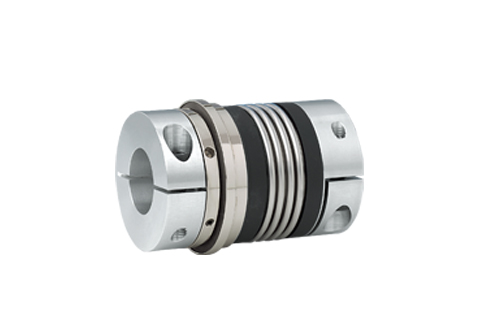
Industry news|2022-01-14| admin
The torque limiter, also known as the safety clutch, is a mechanical power overload protection device, which is often installed between the drive side and the load side of the power transmission. Once overload occurs and the transmitted torque exceeds the set value, the torque limiter will Disengagement or slippage occurs, so that the active and passive sides of the power transmission are separated, which is the damage caused by overloading of mechanical equipment.
The R+W torque limiter mainly relies on the elastic force of the disc spring to press a ring of steel balls into the conical recess to transmit torque. When an overload occurs, the steel ball will break away from the groove and move the action ring, thereby making the coupling The input and output are separated, and the user can also send an emergency stop signal to the transmission through the installed proximity switch.

There are two ways to reset the R+W torque limiter: automatic reset and manual reset. The automatic reset utilizes the elastic force of the disc spring itself. When the overload is removed, the small residual force of the spring will re-press the steel ball into the dimple. Automatic reset is equivalent to a semi-disengaged state. Before reset, the action ring will keep turning until the steel ball is pressed into the groove, so this reset method is not suitable for high-speed occasions, so as to avoid excessive wear of the steel ball and reduce the life of the coupling .
The manual reset model is that when overload occurs, the spring bounces up as a whole, driving the action ring to detach from the steel ball, and the active and driven parts of the coupling are completely disengaged and idling.
Therefore, when the working speed is higher than 200rpm, a manual reset method is required.
The torque limiter will have a set torque at the factory, that is, the release torque. In addition, there will be marks on the action ring to indicate the minimum torque, the release torque and the maximum torque, which is convenient for later adjustment.
The disengagement time of the R+W torque limiter is extremely short, typically 1-2 milliseconds. At the same time, the service life of the torque limiter depends to a large extent on the rotational speed at the time of disengagement and the stopping time of the coupling.
Due to the protective effect of the torque limiter, it can usually be used in testing and large-load situations, such as testing the torque of automobile engines, testing the torque of electric motors, mining machinery, shield machines, etc. Torque limiters are used in these occasions to effectively protect torque sensors, motors, cutter heads, etc.
